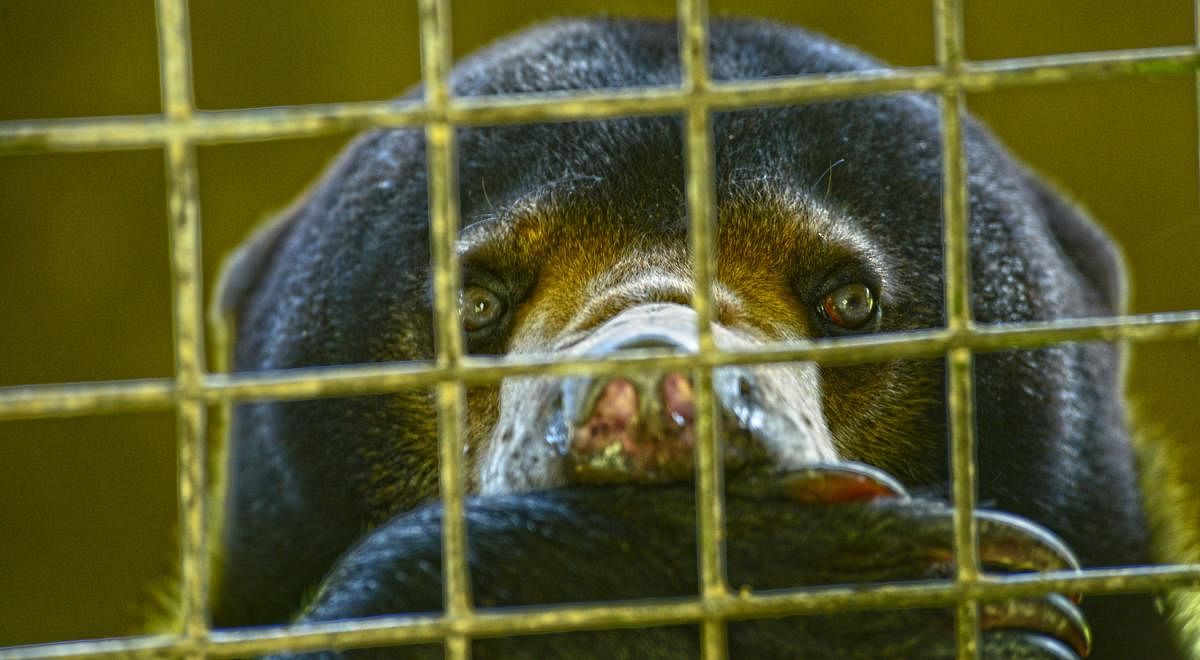

Bats, rodents and other mammals that are sold in animal trade are hosts to three-quarters of known infectious diseases capable of spilling over from animals to humans, researchers have found.
Five animal groups, which comprise just a quarter (26.5%) of all traded species play host to 75% of all known zoonotic viruses, says the new research conducted by scientists from the Ashoka Trust for Research in Ecology and the Environment (ATREE) and The Nature Conservancy, a US-headquartered group. Comparatively, domesticated mammals harbour 51.7% of known zoonotic viruses. The biggest disease risk among traded species was from rodents, bats, ungulates, primates and carnivores.
“Our analysis suggests that risk from those species that are traded is higher than those that are not traded,” explained Dr Kamaljit S Bawa, a co-author of the study and the president of ATREE.
The study, titled Mammals, Wildlife Trade and the Next Global Pandemic and published in the journal Current Biology, is especially relevant considering the ongoing pandemic wrought by the Sars-CoV-2 coronavirus, which the World Health Organisation believes originated from an animal locked into the bushmeat trade in Huanan, China.
Whereas previous research had focused on quantifying the magnitude of the global animal trade with limited data on the pathogen load of animals being traded, the Indo-US research team studied existing data on 800 mammals which are known carriers of 266 zoonotic viruses, cross-referencing their research to determine how many of the creatures are in the animal trade.
Risky contact
They determined that the five high-priority animal groups host 132 or 58% of the known zoonotic viruses in the present animal trade. The research suggests marsupials also pose significant zoonotic disease risks in the future animal trade.
The findings are definitely of concern, said Dr K Nagaraju Shivaprakash of The Nature Conservancy Center in New Delhi, lead author of the study.
“For one, the five animal groups: rodents, bats, ungulates (domesticated and undomesticated hoofed animals), primates and carnivores, not only generally live in close proximity to humans, but they are also, from an evolutionary standpoint, more closely related to humans. Second, they are also species which are heavily traded and which have an inherent capacity to host more viruses that can transfer to humans,” he added.
Rodents can be found in all areas of human habitation; species of bats roost in urban structures, people keep carnivores as pets, primates often live close to human populations and that ungulates such as deer are often poached and consumed.
Additionally, 210 mammal species known to have been legally traded between 2012 and 2016 alone host 51% of known zoonotic viruses as per the database assembled by the researchers.
Financial implications
But an outright ban on wildlife trade may not necessarily work, researchers said.
“The wildlife trade is a $300 billion a year industry. Millions of livelihoods are tied into it. From a conservationist’s point of view, it is easy to say let us ban the trade but what would happen is that the trade would go underground. A more effective strategy is to keep the five animal orders which have shown to have the highest richness of zoonotic viruses out of the wildlife trade. People involved in the wildlife trade should also be given a new livelihood,” Dr Shivaprakash said.
At the same time, the elimination of these animals from the wildlife trade could also cripple the industry financially. “However, we have to consider the financial implications of not doing anything,” Dr Shivaprakash said. “The financial disruption of the ongoing Covid-19 pandemic has amounted to $2.6 trillion globally. Frankly, the way we are treating nature is triggering zoonotic diseases and it is exposing us to more pathogens.”
Alarmingly, the researchers pointed out that only 18-20% of mammals worldwide have been surveyed for viruses. “Mammals and birds alone are thought to host an estimated 1.7 million undiscovered viruses and, of these, 5,40,000 to 8,50,000 viruses could have the ability to infect humans,” the study states.
“There are viruses out there which have the capacity to transfer to humans that we do not yet know of,” Dr Shivaprakash said.
While conservation bodies have done a good job identifying which animal species are vulnerable or at risk, at the current time, there are no animal conservation laws globally that integrate provisions for zoonotic virus surveillance.